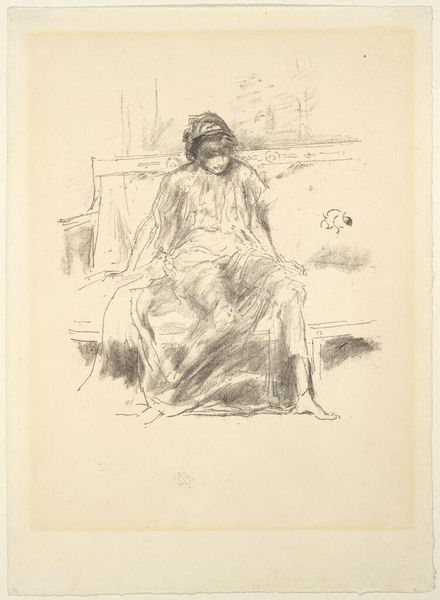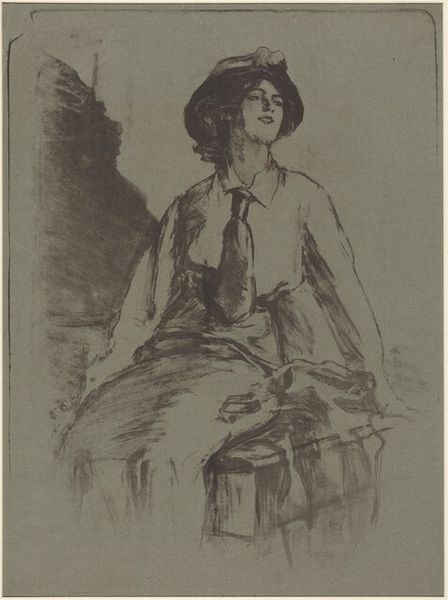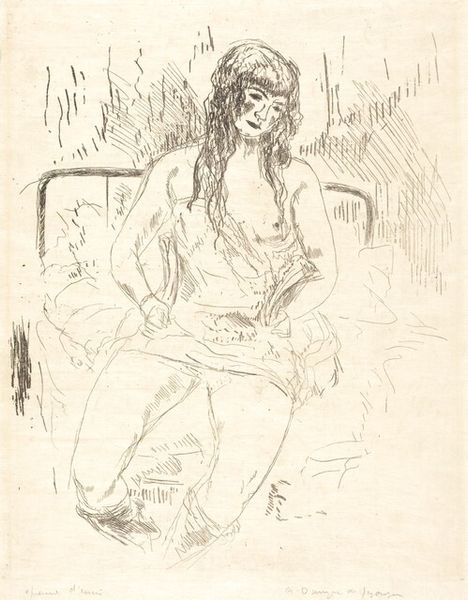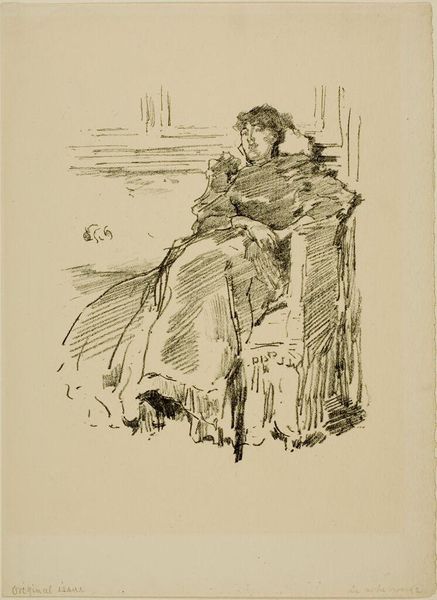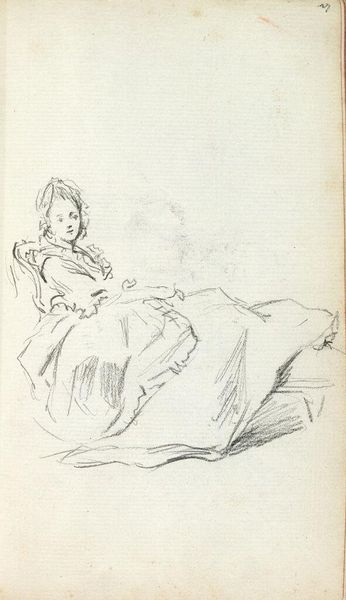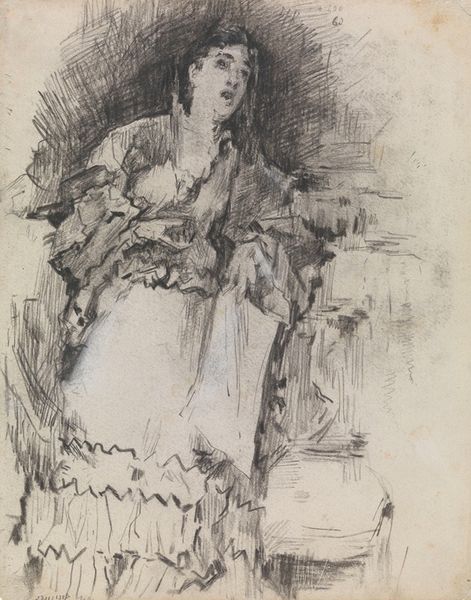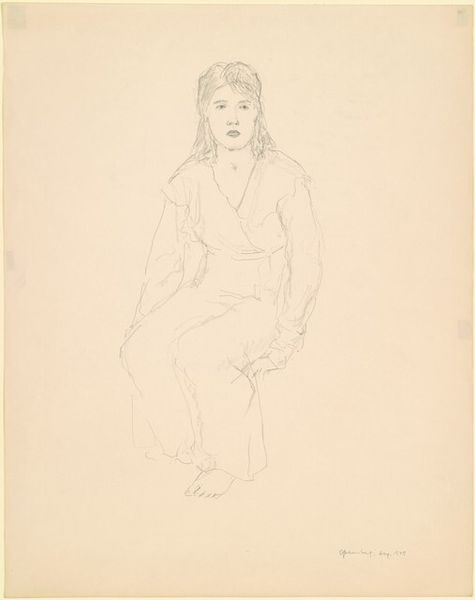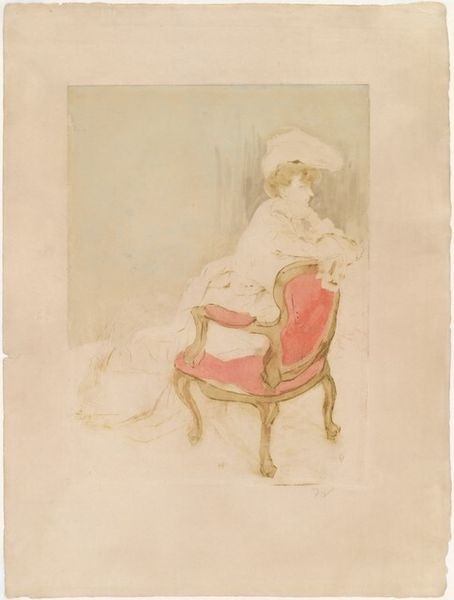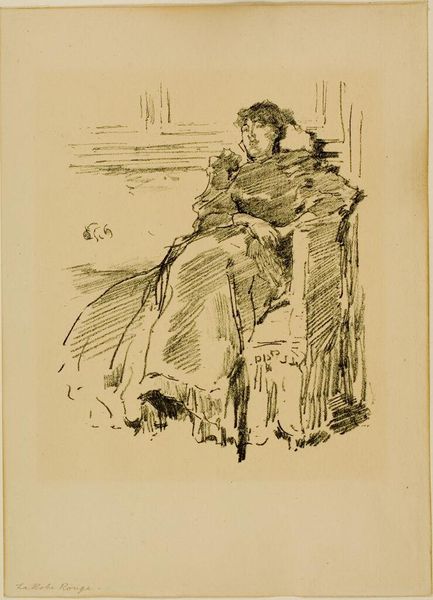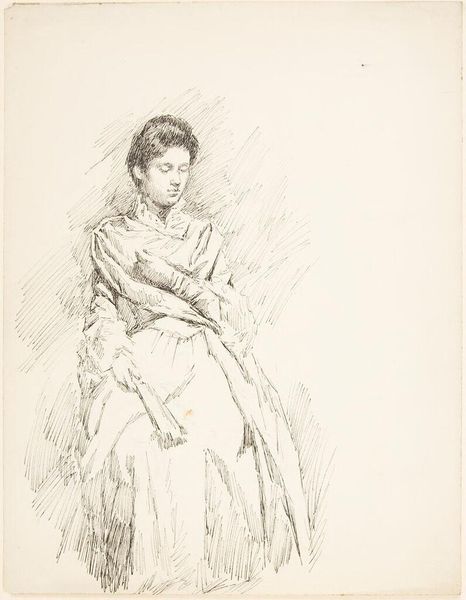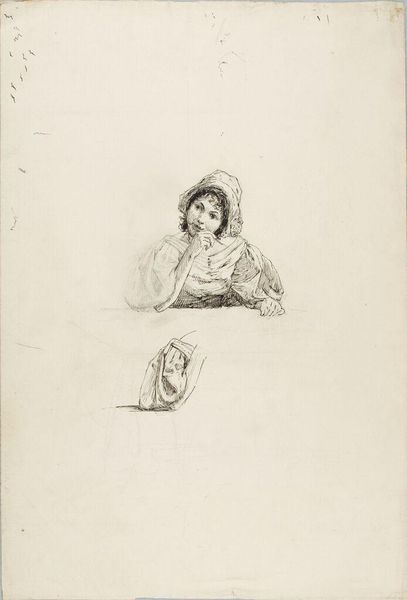
drawing, lithograph, print, pencil
#
portrait
#
drawing
#
lithograph
# print
#
figuration
#
pencil
#
genre-painting
#
realism
Dimensions: 12 x 8 7/8 in. (30.48 x 22.54 cm) (plate)17 15/16 x 11 1/2 in. (45.56 x 29.21 cm) (sheet)
Copyright: No Copyright - United States
Curator: I'm immediately struck by the intimacy of Childe Hassam’s lithograph, "Deshabille," created in 1918. The soft rendering lends the scene a certain privacy. Editor: I agree, there is a softness. The first thing that grabs me is the texture created by the lithographic process. Look at the subtle variations, almost like fabric, which plays against the smooth plane of the paper. Curator: Absolutely. It’s interesting to consider Hassam’s choice of lithography for this subject. It seems fitting given his overall focus during his career on the representation of women in domestic spheres, considering both their agency and their constrained gender roles. The “Deshabille,” or undress, as a site of private life... It encourages our speculation about gender dynamics of this moment. Editor: It speaks to a very specific culture. To think about that moment, though – lithography was very appealing because of its capabilities for mass reproduction. How does this ease of reproduction affect how images and, indeed, identities are produced and distributed at that time? The labor that goes into printmaking and the material accessibility, are essential. Curator: Good points, especially when you consider that the figure is, by all appearances, a white upper-class woman. The image does suggest something beyond face value, an internal reality – perhaps one marked by both luxury and imprisonment of expectations and performance. We have to wonder who gets to occupy a state of graceful, leisurely undress – who can even afford to? Editor: Yes, to even take rest. You mentioned performance, the choice to make this domestic scene a matter for wider consumption via the printing process adds further to that question, and layers more meanings into the representation of it all. This everyday private space enters the public arena as a commodity. Curator: Exactly. And Hassam wasn't always known to interrogate structures of class so explicitly, so in this case, the use of a mass-producible medium to reflect on the position of the woman adds some food for thought. Editor: For sure. The contrast of the woman and domestic materiality presented using mass print culture generates conversation around process and circulation. Curator: It’s this tension, I think, that makes "Deshabille" a quiet, yet powerful image even today. Editor: And through those printing traces, we consider how making it even now, even mass cultural depictions always are also linked to other more complex stories of personhood, history and politics.
Comments
No comments
Be the first to comment and join the conversation on the ultimate creative platform.
